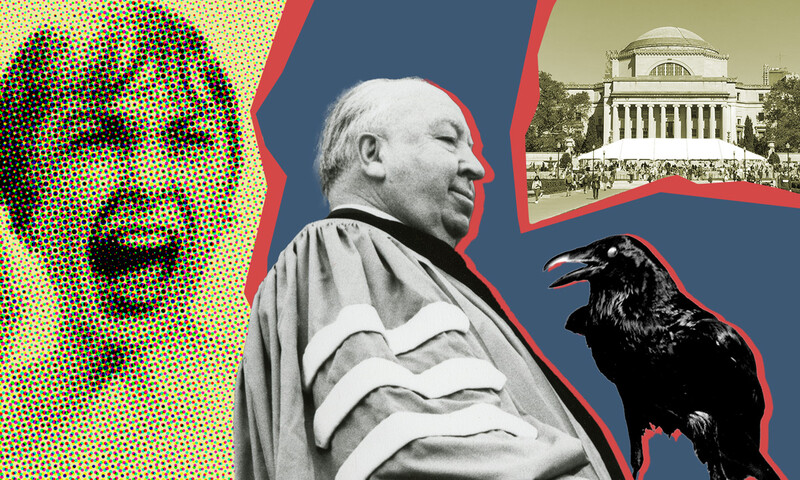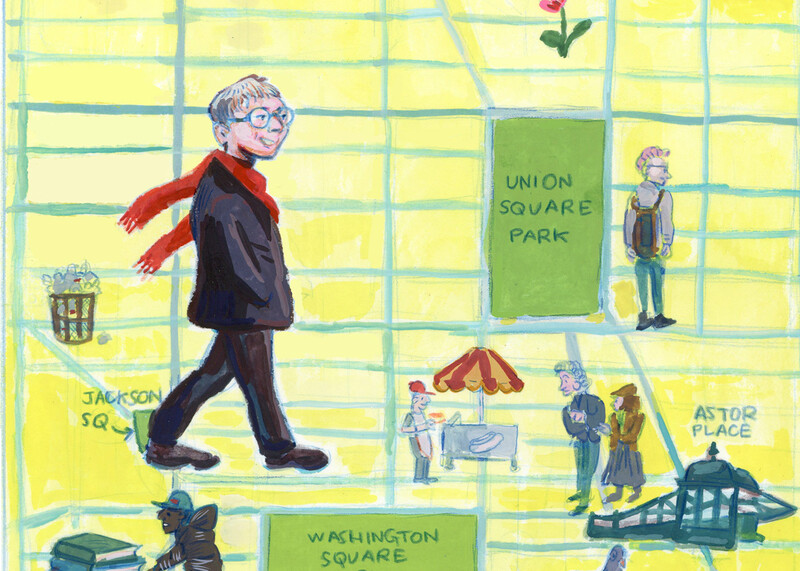John Tauranac ’63GS loved the recent remake of King Kong. “The scenes of the city in the 1930s were spectacular,” he says. “A lot of that monster stuff was overblown, but the view from the top of the Empire State Building, as far as I could figure, had not a single anachronism in it.” He did, however, have one gripe. The theater near Times Square where King Kong was exhibited was misplaced. “In the movie, it was called the Alhambra, but the Alhambra was really on 126th Street and Seventh Avenue.” To most viewers, the oversize ape — or Naomi Watts — was the focal point of the movie, but not so to Tauranac. Manhattan is his 13-mile-long security blanket, and when something is amiss, even a detail on the silver screen, he finds it unsettling.“ I only really feel comfortable in New York,” he says.“When I’m out in the middle of nowhere, I start craving street corners that will protect me, buildings that will hover over me.”
Tauranac, 66, knows all of those corners and buildings well. In addition to two books on the Empire State Building, he is the author of Manhattan Block by Block, a detailed dissection of the city’s streets and landmarks, and Manhattan Line by Line, an equally dense map of the borough’s subway and bus routes. He has written two architectural appreciations of Manhattan and was the principal designer of the New York subway map when it was revised in 1979. In the Riverside Drive apartment where he lives with his wife, Jane Bevans, and daughter, Maggie, Tauranac keeps a six-foot light-up artistic rendering of the Empire State Building and a pencil sketch of the 1979 New York City subway map. His office is lined with bookshelves that stretch from floor to ceiling and are piled with books, magazines, and newspaper clippings about New York.
Tauranac says he walked every street to create Block by Block, carrying a clipboard to note each school, church, hospital, and theater, as well as any landmarks he considered historically significant or simply liked. His fastidiousness was compounded by a peculiar idiosyncrasy: He is unable to chart while facing south. If he maps one side of an avenue he then has to turn back, cross the street, and map the other side. “It’s something I have to live with,” he says.
Tauranac inherited his passion for the city from his father, Harold, who was widowed when Tauranac was nine and was the residential manager at several of Manhattan’s grand old hotels.At one point Tauranac and his sister lived in the Dryden Hotel, on 39th Street between Lexington and Third avenues. One of Harold’s favorite ways to get around was through the basement entrances and exits of buildings.
When Tauranac was laid off from the advertising firm J.Walter Thompson in the early 1970s, he started exploring the city the way his father had taught him. He would descend into a subway passage, follow it from end to end, and look behind every unlocked door — finding dark hallways, storage spaces, and machine rooms. “If it was a dead end I would simply go back and start on the next door I encountered,” he said. “I couldn’t leave a door unopened.”
After six months of investigation, during which he would spend up to four hours a day prowling underground, Tauranac had drafted a map that demonstrated the various ways to travel between 32nd and 60th streets without ever coming up for air. The map, entitled “New York Undercover,” was published in New York magazine, and he completed a similar analysis of the underground world of Lower Manhattan for the magazine soon after. In response, the Metropolitan Transportation Authority hired him as a freelancer in 1974 to write guides for the city’s Culture Bus Loops, two hop-on-hop-off bus tours of Manhattan and Brooklyn. He later wrote the MTA’s Seeing New York travel guide.
In 1976, when Tauranac was only two years into his new vocation, the MTA formed a subway map committee to explore a redesign and selected him to be the chief designer.The exist- ing map was a grid of right angles and blocks of color and, in the tradition of the London Underground map, presented the system with little respect to aboveground geography:The stop at 50th Street and Eighth Avenue appeared east of Broadway, for example, and Bowling Green was marked north of Rector Street. “There were people who simply looked at it as an aesthetic object,” Tauranac says.“That’s not what a map is.”
Tauranac’s plan gave a geographic orientation to the city and simplified the color-coding system to minimize the clutter of the different lines. Colors were assigned based on the trunk lines. The 1, 2, 3, and 9 trains, for example, were all red because they followed the same tree-trunk path, or network of branches and roots that run up Broadway and Seventh Avenue. Also, Tauranac notes,“I always thought there was a certain cynical reality to the colors. I liked the green line going on the Upper East Side where the money is. I liked the idea of having the red line run up the Upper West Side, because that’s where the liberals are, who used to be called the Comsymps” — or Communist sympathizers.
The map was finally printed in 1979. “It was a brilliant tour de force,” says Anthony Smith, the former MTA chief administrative officer. “He went from a highly stylized version that he inherited to one that gave you a real sense of the geography of the five boroughs. If you think of the number of people who need that map every single day, it’s quite a tribute.”
Of course, Tauranac’s obsession with his hometown wasn’t confined to the underground. His book Essential New York, a study of Manhattan’s most significant structures dating from the mid-1700s to 1977, was published in 1979. Elegant New York appeared in 1985 and chronicled the late-19th-century building boom of the wealthy upper class.Ten years later he wrote The Empire State Building: The Making of a Landmark. Unlike the stylized grid of the 1972 map, Tauranac’s map, published in 1979, gave the subway a geographical orientation and simplified the color-coding system. The MTA’s current map retains many of Tauranac’s design elements.
Tauranac began publishing his own books under the name Tauranac Press in 1997. He wrote The View From the 86th Floor after discovering that few guides at his beloved Empire State Building could identify the buildings visible from the observation deck. Manhattan Block by Block is the press’s best-known publication. A small marvel, the four-by-nine-inch volume maps out every block of the borough, starting at the Staten Island Ferry Terminal and ending just north of Columbia’s Baker Field. It’s geographically accurate — and selectively annotated. For example, Tauranac points out that the co-op board at 19 East 72nd Street turned down Richard Nixon’s application. The Polo Grounds Houses at 155th Street are described as the site “where the New York Giants played baseball until snatched untimely from their mother’s home and dispatched to San Francisco.”
The book was first published in 2000 and Tauranac has revised it three times. He keeps a copy, marked “If Found Please Return,” in his back pocket at all times. When he is walking around the city on errands and observes a change, he stops and makes a note in the book’s margins. Before any new map is published, he edits it while holding it upside down on the subway, at once relishing and ignoring the strange looks he receives from other passengers who have no idea that he is the man who argued over the right shade of orange for the B, D, and F lines 30 years ago.“You don’t want a muddy orange,” he explains with a sigh. “You want vibrant colors. It’s a very delicate balance — you don’t want colors that are so brilliant that they fight with each other all the time. It just takes a lot of —” he sighs again. “You just have to keep going until there’s the proper balance.”
“Rather than perfectionism,” he adds, “it’s an obsessiveness. But it still gives me a sense of satisfaction to see someone looking at the subway map say, ‘Oh, this makes sense.’”


